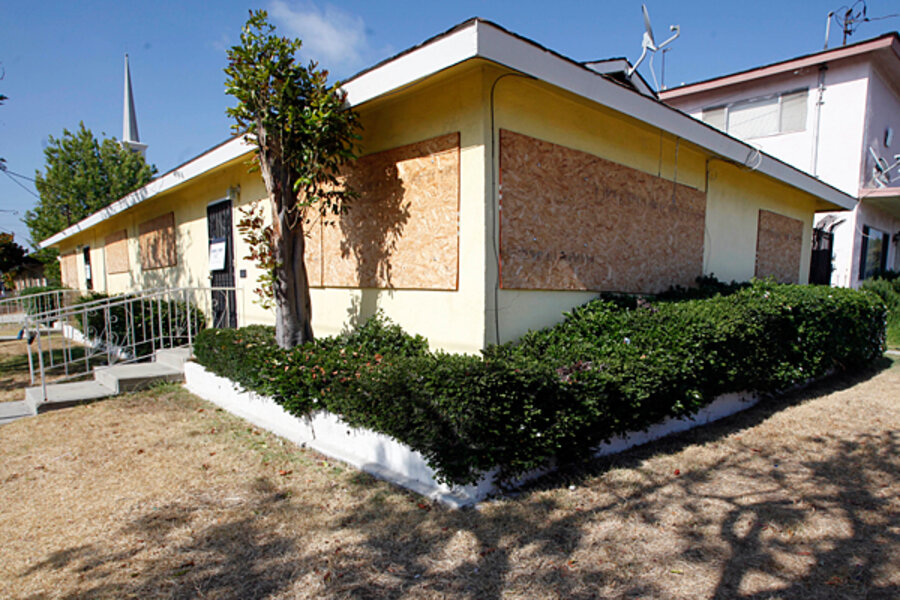Freddie Mac reports loss, seeks another $1.8 billion in taxpayer bailout
The mortgage-finance company Freddie Mac reported a $4.7 billion net loss for the second quarter Monday, due to a rise in home loans that ended in default.
The report, following a similar loss at sister company Fannie Mae last week, underscores that the US housing market remains a central trouble spot in the economy. Because these government-sponsored enterprises (GSEs) sit at the heart of the housing market, it also means the taxpayer tab is rising for keeping these firms afloat.
In reporting the loss, Freddie Mac also said that the Federal Housing Finance Agency will ask for $1.8 billion in additional Treasury funds to support the firm. The FHFA has held Fannie Mae and Freddie Mac in a conservatorship, to keep them from failing, since they collapsed during the 2008 financial crisis.
The FHFA made a similar request for new aid for Fannie Mae ($1.5 billion) last week. The new requests mean the two mortgage companies have needed $148.2 billion to stay afloat, according to the Associated Press. About $63.1 billion of that is being used by Freddie Mac.
The infusions of cash are designed to maintain a positive net worth at both firms. The goal is not simply to prop up the firms, but to avoid a collapse in the availability of mortgage credit at a time when the housing market is already weak.
Although both firms reported some positive trends, the taxpayer costs could climb much higher. In one recent survey of federal recession-fighting policies, economists Mark Zandi of Moody's Economy.com and Alan Blinder of Princeton University estimated that the GSE bailouts will ultimately total $305 billion, a bit more than double the current tally.
Losses at the GSEs could persist because America's great foreclosure wave appears to be continuing. Fannie and Freddie together end up owning or guaranteeing most of the new home loans made in the US by banks or other finance companies. The role the GSEs play, which is based on a congressional charter and implied federal backing, has helped to keep the market for mortgage-related securities alive, even amid the financial crisis.
But their enormous scale, and the guarantees they make, also means the mortgage giants are very exposed to housing-market risks. At Freddie Mac, for instance, charge-offs of bad loans hit $3.9 billion in the second quarter, up from $2.8 billion in the first quarter and $1.9 billion in the second quarter of 2009.
If the Zandi-Blinder forecast proves to be accurate, the rescue of the GSEs will be the largest of all the government bailouts – larger than the ultimate cost of the Troubled Asset Relief Program or the various actions by the Federal Reserve combined. The only larger cost, in their list of actions designed to revive the economy or to avert a depression, is the Obama economic stimulus package of tax cuts and new federal spending on things like highway projects.
Freddie Mac said some housing trends may be starting to shift in a positive direction. In the second quarter, the firm set aside a bit less money for future loan losses than it did in the first quarter, because of a small downshift in the percentage of borrwers who are delinquent.
"We recognize that high unemployment and other factors still pose very real challenges for the housing market," Freddie Mac chief executive officer Charles Haldeman Jr. said in a statement accompanying the financial report. "With that in mind, we continue to focus on the quality of the new business we are adding to our book to be responsible stewards of taxpayer funds as we support the nation's housing market."
His statement and the losses to taxpayers come as Congress is about to take up the question of so-called GSE reform, or what to do with Fannie and Freddie in the long term. The Obama administration has scheduled a public conference on the topic on Aug. 17.





